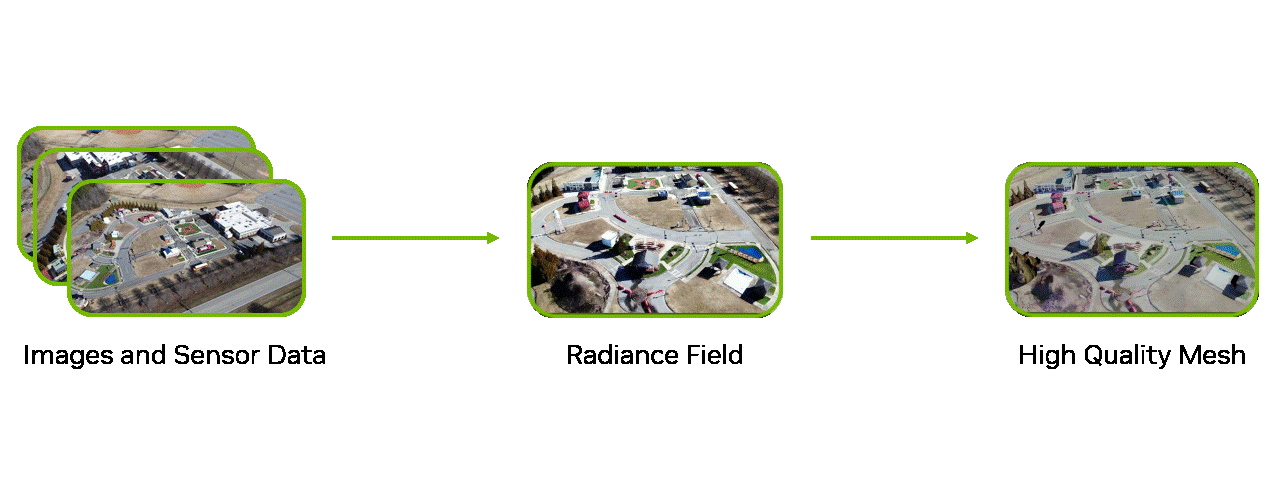Welcome to fVDB-Reality-Capture!
fVDB-Reality-Capture is a reality-capture toolbox built on top of fVDB. It provides high-level abstractions and APIs for common reality capture tasks, such as loading sensor data, reconstructing radiance fields, extracting meshes and point clouds, visualization, and exporting results across standard formats such as PLY and USDZ. By leveraging the power of fVDB, fVDB-Reality-Capture can scale reconstruction to very large or dense inputs, while maintaining high performance and low memory usage. fVDB has 50% better throughput than gsplat in end-to-end training benchmarks and 30% lower runtime, while producing higher quality results and working out-of-the box on a wide range of inputs. The videos below show large-scale reconstructions of complex scenes using fVDB-Reality-Capture.
100 million 3D Gaussians reconstructed from 400 high-resolution images, rendered in a browser
Reconstructing a high quality Gaussian splat radiance field and mesh from 177 images
The relationship between fVDB-Reality-Capture and fVDB is analogous to the relationship between torchvision and PyTorch, where fVDB-Reality-Capture provides domain-specific functionality for reality capture applications, while fVDB provides the underlying data structures and algorithms for efficient GPU computation.
fVDB-Reality-Capture aims to be production ready, with a focus on robustness, usability, and extensibility. It is designed to be easily integrated into existing pipelines and workflows, and to support a wide range of use cases and applications. To this end, both fVDB and fVDB-Reality-Capture have a minimal set of dependencies, and are open source under the Apache 2.0 license. We welcome contributions and feedback from the community.
Features
Efficient loading and manipulation of sensor data (images, depth maps, camera poses, etc.), even if they are larger than available memory.
Composable transforms for common data augmentation and preprocessing operations, with built-in caching for improved performance.
State-of-the-art radiance field reconstruction using 3D Gaussian Splatting, optimized for speed and quality.
Extraction of high-quality meshes and point clouds from reconstructed radiance fields, with support for various output formats.
Visualization tools for inspecting sensor data, radiance fields, and reconstruction results.
Extensible design that allows users to easily add new functionality and customize existing components.
Comprehensive documentation and tutorials to help users get started quickly.
Automatic scaling to multiple GPUs in a single machine for large-scale reconstructions (source code only, packaging coming soon).
What is Reality Capture?
Reality capture is the process of creating digital 3D representations of real-world objects and environments using various sensing technologies, such as cameras, LiDAR, and depth sensors. The goal of reality capture is to accurately and efficiently reconstruct the geometry, appearance, and other properties of the physical world into usable 3D models and scenes.
Modern reality capture pipelines make heavy use of radiance fields. fVDB-Reality-Capture provides best-in-class tools to reconstruct radiance fields using 3D Gaussian Splatting.
A common reality capture pipeline typically resembles the figure below:

Tutorials and Examples
API References